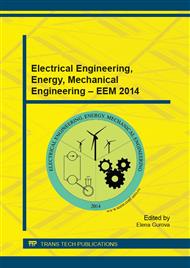p.391
p.395
p.401
p.405
p.411
p.419
p.424
p.430
p.434
New Criterion for Prediction of Amorphous Alloy Compositions: A Сombination of Dense Packing of Spheres and the Lambda Criterion through the Coordination Number
Abstract:
This work presents the development of a new criterion which can indicate unknown compositions for amorphous metallic alloys. This new criterion was based on dense packing of spheres combined with the lambda criterion through the coordination number. A simplified mathematical development is presented, and software was developed with the purpose of indicating alloys with best glass forming ability (GFA). This software includes and concatenates several other criteria. For this purpose, we performed a mathematical analysis of the criteria, which included: (i) λ_min criterion which uses the minimum topological instability parameter and is used as an indication of phase competition during the solidification. (ii) the γ parameter, which reflects the relative GFA between bulk metallic glasses (BMG), and it is based on characteristic temperatures, such as: the glass transition temperature - Tg, the crystallization onset temperature - Tx and the liquidus temperature - Tl. (iii) the parameter Zc that is the critical thickness for bulk glass formation, which corresponds to the maximum dimension in which the molten can be formed without any crystals precipitation and (iv) the parameter Rc that is the critical cooling rate for glass formation, which decreases inversely to the Zc values. Through a mathematical formalism combining all the parameters, the software can decide the most suitable composition range to produce a new alloy. The results are presented and compared with the ones available in the literature. The results indicate good agreement with the literature since it is not a general theory, but intends to meet some specific cases with a reasonable convergence and which still need to be better studied.
Info:
Periodical:
Pages:
411-418
Citation:
Online since:
December 2014
Keywords:
Price:
Сopyright:
© 2015 Trans Tech Publications Ltd. All Rights Reserved
Share:
Citation:


